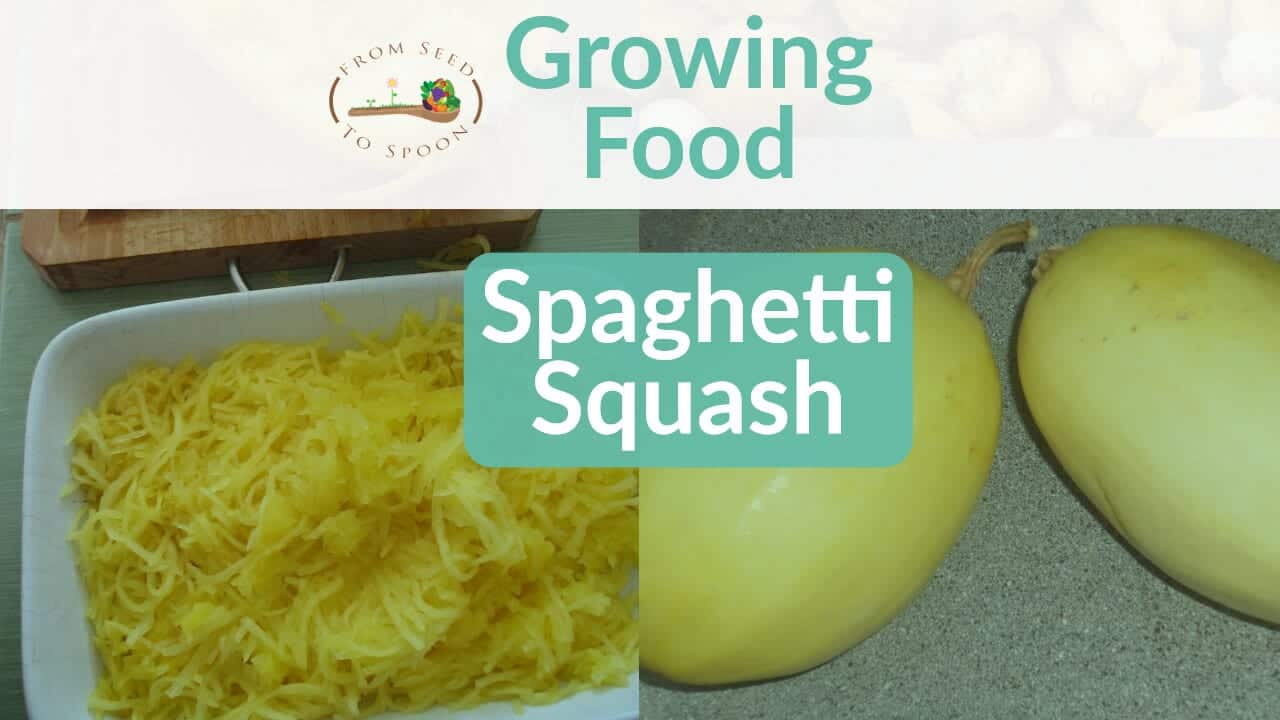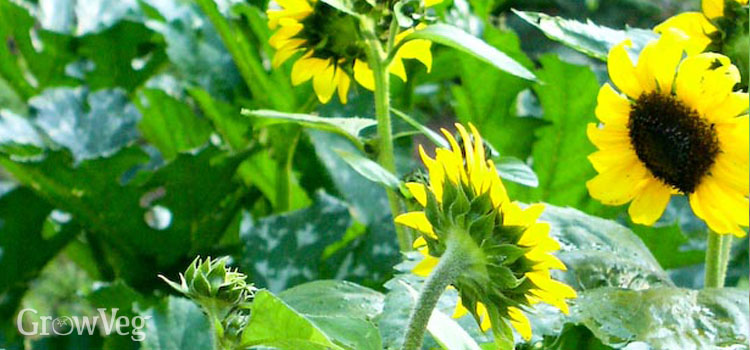The Ultimate Guide To Spaghetti Squash Companion Planting
The Ultimate Guide to Spaghetti Squash Companion Planting
Spaghetti squash is a delicious and versatile vegetable that can be enjoyed in a variety of ways. It's also relatively easy to grow, but there are a few things you can do to improve your chances of success. One of those things is companion planting.
Companion planting is the practice of planting certain crops together in order to benefit each other. Some plants can help to deter pests, attract beneficial insects, or improve the overall health of the soil. When it comes to spaghetti squash, there are a number of companion plants that can help you grow a bountiful crop.
In this guide, we'll discuss the best companion plants for spaghetti squash, as well as some plants that you should avoid planting near it. We'll also provide some tips on how to use companion planting to improve your garden's overall health.
Benefits of Companion Planting
There are many benefits to companion planting, including:
- Reduced pest pressure: Some companion plants can help to deter pests, such as aphids, squash bugs, and cucumber beetles. This can help to protect your spaghetti squash plants from damage and reduce the need for chemical pesticides.
- Increased pollination: Some companion plants, such as flowers, can attract beneficial insects, such as bees and butterflies. These insects help to pollinate your spaghetti squash plants, which can lead to a larger harvest.
- Improved soil health: Some companion plants, such as legumes, can fix nitrogen in the soil. This can help to improve the overall health of your garden's soil and make it more fertile.
- Enhanced flavor: Some companion plants, such as basil, can actually enhance the flavor of spaghetti squash. This is because they release certain chemicals that interact with the squash's flavor compounds.
Best Companion Plants for Spaghetti Squash
Here are some of the best companion plants for spaghetti squash:
- Corn: Corn is a tall plant that can provide shade for spaghetti squash plants, which can help to protect them from pests and diseases. Corn also helps to improve the pollination of spaghetti squash plants.
- Beans: Beans are legumes that fix nitrogen in the soil. This can help to improve the overall health of your garden's soil and make it more fertile. Beans also help to suppress weeds, which can free up your time and energy to focus on other tasks.
- Peas: Peas are another legume that fixes nitrogen in the soil. They also help to suppress weeds and attract beneficial insects.
- Sunflowers: Sunflowers are tall plants that can provide shade for spaghetti squash plants. They also help to attract beneficial insects, such as ladybugs and lacewings, which can help to control pests.
- Marigolds: Marigolds are a type of flower that can help to deter pests, such as aphids, squash bugs, and cucumber beetles. They also help to attract beneficial insects, such as ladybugs and lacewings.
- Nasturtiums: Nasturtiums are another type of flower that can help to deter pests. They also help to attract beneficial insects and improve the flavor of spaghetti squash.
- Dill: Dill is an herb that can help to attract beneficial insects, such as ladybugs and lacewings. It also helps to improve the flavor of spaghetti squash.
- Radishes: Radishes are a root vegetable that can help to deter pests, such as squash vine borers. They also help to improve the drainage of the soil, which can help to prevent root rot in spaghetti squash plants.
Plants to Avoid Planting Near Spaghetti Squash
There are a few plants that you should avoid planting near spaghetti squash, including:
- Potatoes: Potatoes are a heavy feeder and can compete with spaghetti squash plants for nutrients.
- Tomatoes: Tomatoes are susceptible to the same pests and diseases as spaghetti squash, so planting them together can increase the risk of infection.
- Brassicas: Brassicas, such as broccoli, cabbage, and cauliflower, need a more neutral soil than spaghetti squash. Planting them together can make the soil too acidic for spaghetti squash plants to thrive.
Conclusion
Companion planting is a great way to improve the health and productivity of your garden. By planting certain crops together, you can help to deter pests, attract beneficial insects, and improve the overall health of the soil. When it comes to spaghetti squash, there are a number of companion plants that can help you grow a bountiful crop. By following the tips in this guide, you can create a healthy and productive garden that will provide you with delicious spaghetti squash for years to come.
Spaghetti squash is a delicious and versatile winter squash that can be enjoyed in many different ways. But did you know that there are certain companion plants that can help to improve its growth and flavor?
Some of the best companion plants for spaghetti squash include:
- Corn: Corn helps to provide shade for spaghetti squash plants, which can help to prevent them from getting sunburned. Corn also helps to attract pollinators, which are essential for the pollination of spaghetti squash flowers.
- Beans: Beans fix nitrogen in the soil, which can help to improve the nutrient availability for spaghetti squash plants. Beans also help to suppress weeds, which can help to reduce the amount of time and effort you need to spend weeding your garden.
- Lettuce: Lettuce helps to suppress weeds and improve the drainage of the soil, which can both benefit spaghetti squash plants. Lettuce also provides a habitat for beneficial insects, which can help to control pests.
- Marigolds: Marigolds help to repel pests such as squash bugs and cucumber beetles, which can be a major problem for spaghetti squash plants. Marigolds also help to improve the flavor of spaghetti squash.
If you're looking to grow a bumper crop of spaghetti squash, I encourage you to visit Gardenia Inspiration for more information about companion planting. They have a comprehensive list of companion plants for all types of vegetables, including spaghetti squash.
FAQ of spaghetti squash companion plants
Q: What are some good companion plants for spaghetti squash?
A: Spaghetti squash can be planted with a variety of other plants, including:
- Corn: Corn provides shade for spaghetti squash, which can help to protect it from pests and diseases.
- Beans: Beans fix nitrogen in the soil, which can benefit spaghetti squash and other plants.
- Cucumbers: Cucumbers and spaghetti squash have similar growing requirements, so they can be planted together.
- Marigolds: Marigolds can help to repel pests from spaghetti squash.
- Nasturtiums: Nasturtiums can also help to repel pests from spaghetti squash.
Q: What are some plants that should not be planted near spaghetti squash?
A: Some plants that should not be planted near spaghetti squash include:
- Melons: Melons and spaghetti squash are susceptible to the same diseases, so planting them together can increase the risk of disease.
- Potatoes: Potatoes and spaghetti squash compete for nutrients, so planting them together can stunt the growth of both plants.
- Tomatoes: Tomatoes and spaghetti squash can attract the same pests, so planting them together can make it more difficult to control pests.
Q: How do companion plants benefit spaghetti squash?
A: Companion plants can benefit spaghetti squash in a variety of ways, including:
- Providing shade: Some companion plants, such as corn, can provide shade for spaghetti squash, which can help to protect it from pests and diseases.
- Fixing nitrogen: Some companion plants, such as beans, can fix nitrogen in the soil, which can benefit spaghetti squash and other plants.
- Repelling pests: Some companion plants, such as marigolds and nasturtiums, can help to repel pests from spaghetti squash.
- Attracting beneficial insects: Some companion plants, such as yarrow and dill, can attract beneficial insects, such as ladybugs and lacewings, which can help to control pests.
Q: How far apart should spaghetti squash plants be planted?
A: Spaghetti squash plants should be planted 3-4 feet apart. This will give them enough space to grow and prevent them from competing for resources.
Image of spaghetti squash companion plants
Here are 5 images of spaghetti squash companion plants from Pinterest:
- Pole beans: Pole beans are nitrogen-fixing plants, which means they can help to improve the soil quality for other plants in the garden. They also provide shade for the spaghetti squash plants, which can help to prevent them from getting too hot.

- Marigolds: Marigolds are known for their insect-repelling properties. They can help to keep pests away from the spaghetti squash plants, such as squash bugs and cucumber beetles.

- Cucumbers: Cucumbers and spaghetti squash are both members of the cucurbit family, so they have similar growing requirements. They can also help to shade each other from the sun.

- Sunflowers: Sunflowers are tall plants that can provide shade for the spaghetti squash plants. They also attract pollinators, which can help to improve the pollination of the spaghetti squash flowers.

- Nasturtiums: Nasturtiums are another insect-repelling plant that can help to keep pests away from the spaghetti squash plants. They also add a splash of color to the garden.

Post a Comment for "The Ultimate Guide To Spaghetti Squash Companion Planting"